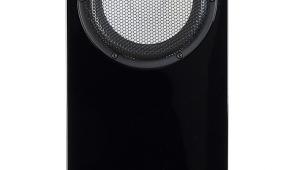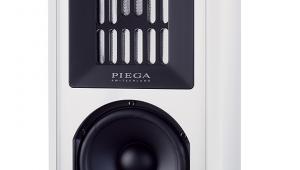Magnepan Magneplanar 20.7 loudspeaker

 A staple at the Hi-Fi Show Live, Magnepan's largest Magneplanar finally gets its first in-depth test
A staple at the Hi-Fi Show Live, Magnepan's largest Magneplanar finally gets its first in-depth test
Back in the 1980s, when the UK hi-fi scene began, belatedly, to experience products from places more exotic than Glasgow, Bradford, Huntingdon, Maidstone and Salisbury – ones that didn't say 'Made in Japan' on them – the USA provided a stream of surprises, one of the most memorable being Magneplanar loudspeakers. For most audiophiles, isodynamic drivers were something you found in a left-field Wharfedale headphone of the early 1970s, yet here were full-range panel speakers using essentially the same technology.
Magnepan, the Minnesota-based manufacturer of Magneplanar products, subsequently lost its traction in the UK but – despite one of the worst manufacturer websites you will see – the company continues to have a strong reputation in the US where, in a context of spiralling high-end product prices, its offerings are now viewed as giant-killers. None more so than the 20.7 we have here, a giant itself at 79in (just over 2m) tall, which you can now buy in the UK for a smidge under £19k a pair.
Socks Away
Wendell Diller, Magnepan's marketing manager, declined to answer our straightforward questions about what lies beneath the acoustically transparent 'socks' that cover much of the 20.7. So what follows includes some educated guesswork!
The 20.7 is a three-way design, with treble frequencies delivered by a full-height, genuine ribbon driver set close to one edge of each speaker. As the 20.7 is supplied in mirror-image pairs, the user can choose to have the tweeters positioned towards either the outer or inner edges of the panels, thereby adjusting sound quality to suit room acoustics, required listening area and personal taste. In either case, says Magnepan, the tweeter should be positioned closer to the listener than the bass section.
Patently Clear?
Bass and midrange frequencies are carried by two isodynamic panels each, although the disposition of those panels is unclear. Also uncertain is whether these 'quasi-ribbon' panels are of the type described in company founder Jim Winey's patent (US3,674,946, granted in 1972) in which the planar 'voice coil' comprises flattened strip conductors, or whether round wire conductors, adhesively bonded to the Mylar diaphragm, are used instead. In either case the rows of bar magnets with which the 'voice coil' interacts are placed on one side of the diaphragm only.

One of the advantages of isodynamic drivers is that they have almost resistive impedance, which as well as rendering them easier to drive makes crossover design significantly simpler. Magnepan does not specify crossover frequencies or crossover slopes for the 20.7 but a dip in the speaker's impedance versus frequency trace at about 460Hz suggests that the bass-mid crossover is hereabouts. Crossover to the ribbon tweeter appears to be at around 3.5kHz. The crossover network is not split: a single pair of gold-plated terminals, with grub screws for the clamping of 4mm plugs, is provided for amplifier connection, so bi-/tri-wiring and bi-/tri-amping are not possible. But resistive attenuators can be fitted, in place of jump wires, to the midrange and tweeter sections to adjust tonal balance. Although the 20.7 is easy to drive electrically, its exceptionally low sensitivity requires a muscular amplifier if high SPLs are to be achieved.
As with any dipole speaker, the 20.7 radiates the same intensity of sound backwards as forwards, albeit in antiphase, with a null in the plane of the panel. This poses different challenges for room placement than unipolar speakers do.
At bass frequencies the 4.8dB directivity index of a dipole reduces LF room gain and the excitation of some room modes, although the latter may or may not be advantageous because of the effect on modal fill. At higher frequencies the size of the panels and the spacing between the midrange panels and tweeter will inevitably make for uneven horizontal dispersion. Vertically, the constrained directivity significantly attenuates ceiling and floor reflections.
![]() Close Your Eyes...
Close Your Eyes...
Auditioned in Editor PM's media room with Constellation Taurus amplifiers, the 20.7s delivered a seamless and exceptional expanse of sound from top to bottom. Take ABBA's 'Eagle' [from The Album; Polydor 533 980-2] by way of example – few would ever call this compressed and heavily processed pop 'audiophile' fodder, yet the 20.7s seemed able to unwrap it, revealing all the goodies inside.
























































